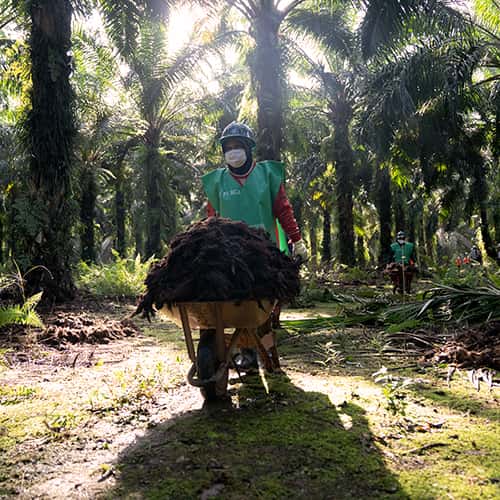What are Scheme Smallholders?
What is the Difference Between Scheme and Independent Smallholders?
Scheme Smallholders
Smallholder farmers, landowners or their delegates who do not have:
- The enforceable decision-making power on the operation of the land and production practices; and/or
- The freedom to choose how they utilise their land, types of crops to plant, and how they manage them (how they organise, manage and finance the land) (source : 2018 RSPO Principles and Criteria (P&C));
- Smallholders that may be structurally bound by contract, credit agreement or by planning to a particular mill, but the association is not necessarily limited to such linkages. Other terms commonly used for schema smallholders include associated and/or plasma smallholders (source : 2020 RSPO Certification System for P&C).
Independent Smallholders
All smallholder farmers who are not considered scheme smallholders are considered independent smallholder farmers. In addition, the total size of their oil palm production area is smaller than or equal to 50 hectares (ha) OR smaller than or equal to the maximum size defined in a National Interpretation (source : 2019 RSPO Independent Smallholder (ISH) Standard).
How do Scheme Smallholders become RSPO Members?
Scheme smallholders must be certified together with the mill with which they are associated. A list of certified supply base mills can be found here. According to the 2018 RSPO Principles and Criteria (P&C), the certified mill shall develop and implement a plan to ensure that 100% of scheme smallholders and scheme outgrowers are compliant with the 2018 RSPO P&C within three years of the mill’s initial certification.
How do Scheme Smallholder become RSPO Certified?
For companies operating mills, the certification model to be followed is the certification of the mill and its supply base. Scheme smallholders must be certified using the 2018 RSPO Principles and Criteria (P&C). However, there are two systems that they can use for certifying smallholders as presented below:
Photo Credit: RSPO/PT. BGA

